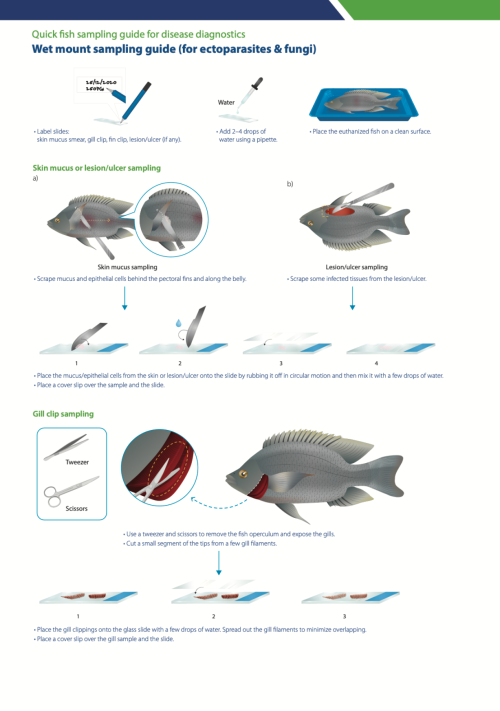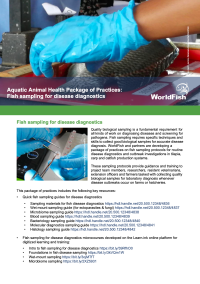Quick fish sampling for disease diagnostics: Wet mount sampling guide (for ectoparasites & fungi)
4 February 2024 | Delamare-Deboutteville, J., Ali S.E.S.M., and Chadag V.M. | 796 Downloads | .pdf | 11.23 MB | Health and Biosecurity
Parasitic and fungal infestations represent one of the major challenges to sustainable aquaculture. As part of routine health checks or during abnormal mortality events, screening for ectoparasites and fungi in tilapia, carp and catfish production systems is important to minimize the risk of their introduction, transmission and spread.
WorldFish and partners developed this quick guide for ectoparasites and fungi assessment under a light compound microscope. Standard wet-mount specimens consist of gill biopsy (gill clip), fin biopsy (fin clip) and skin scraping (mucus smears). Additional smears may be included in the presence of external lesions/ulcers (eye, skin, mouth).
A free online training course on wet mount sampling is also available via Learn.ink.
Creative Commons Attribution-NonCommercial.

